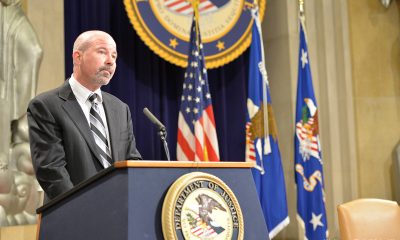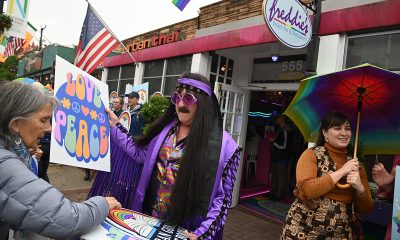Arts & Entertainment
Jasmine Guy’s world today
Actress in town this weekend with Harlem Renaissance tribute show
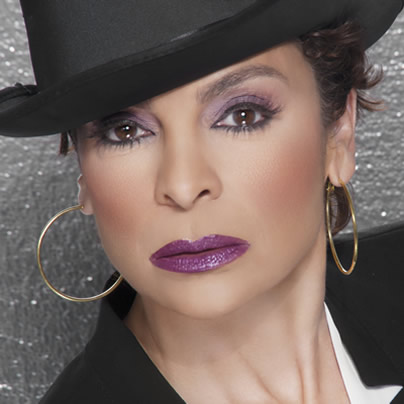
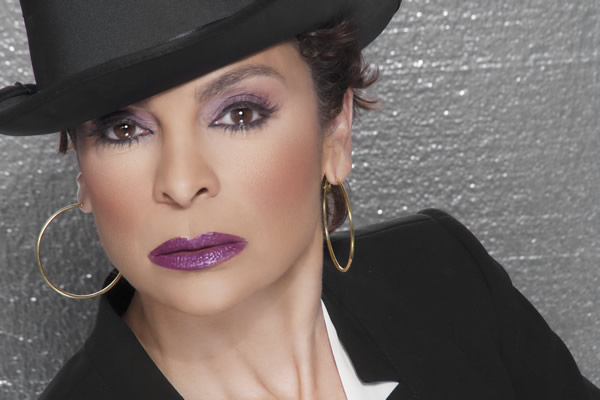
Actress Jasmine Guy says her passion for black culture in the early 20th century has kept her doing ‘Raisin’ Cane’ for five years. (Photo by Calvin Evans)
‘Raisin’ Cane: A Harlem Renaissance Odyssey’
Starring Jasmine Guy and the Avery Sharpe Trio
Saturday, 8 p.m.
Publick Playhouse
5445 Landover Rd.
Cheverly, MD
$55 VIP (includes pre-show reception)
$40 general
301-277-1710
Actress/singer Jasmine Guy will be in the D.C. area this weekend for a one-night-only performance of “Raisin’ Cane: a Harlem Renaissance Odyssey.”
We caught up with her by phone from her home in Atlanta where she answered questions about the show, gay rights, her work on the hit ’87-‘93 sitcom “A Different World” (she played spoiled Whitley for the show’s entire six-season run) and more. Her comments have been slightly edited for length.
WASHINGTON BLADE: Tell us about “Raisin’ Cane.”
JASMINE GUY: I’ve been doing the show over the past five years in various places all over the country. It grows and changes and morphs every time we do it. I do it with three other musicians — a jazz violinist, a percussionist and our composer, Avery Sharpe and we cover the decade between 1919 and 1929 of the Harlem Renaissance, right after World War I but just before the Great Depression when there was a lot of money flowing into Harlem and a lot of artists were flourishing. Painters, poets, writers, philosophers, so it was a pretty rich time in our American history. A lot of what has come down to us as Americans has come from that period as far as ways of thinking and ways of articulating our needs.
BLADE: Are you playing a specific character?
GUY: I’m like a teacher taking you through this journey. Along the way, whatever lesson needs to be taught, that’s what I do. I either reenact a scene or become another character or I dance or sing or tell a story or recite a poem — there’s a lot of all of that involved in the show.
BLADE: How did you come to the work?
GUY: Avery Sharpe and I have been friends for over 30 years and when he brought the piece to me, it started as a reading and an experimental piece to see where the interest was with people and over the last five years, it’s just continued to grow and grow. I stayed involved because of my passion for that decade and what was happening politically and historically in that time as well as artistically. It was such a fun and exciting time where jazz was birthed and we had poets like Langston Hughes and Zora Neale Hurston and painters like Aaron Douglas and philosophers like W.E.B. DuBois and Booker T. Washington and Marcus Garvey who were claiming freedom in their own way.
BLADE: African-American themes are recurring in your body of work. To what degree have you sought them out versus had them come to you?
GUY: Sometimes they intertwine. There are the roles that we pick and the roles we kind of cross paths with and we don’t really know why. There have been certain projects where I feel like I’m part of telling the truth, whether it’s “A Different World” or “Queen” (“The Story of an American Family”), or “Stompin’ at the Savoy” or “Dead Like Me,” there seems to be a certain truth to the quality of the work we’re doing at the time and I think that truth is what draws me in. I love that we tell stories that haven’t been told yet and that I’m able sometimes to get an audience to think as well as to laugh. I’m not sure which is more important, but I like that I can do both.
BLADE: Some have said gay activists who draw parallels to the Civil Rights movement are overreaching. Is that a valid line of reasoning in your opinion?
GUY: I have had friends over the years who have resented the comparison. … I think what we really all want is to be treated equally and have the right to make our own choices in our lives and in that respect, both gay rights and African-American rights have been stifled in this country and we’ve had to fight for those rights. We are still fighting in certain ways for those rights. … For some … the fight has shifted. I mean, we’re able to vote legally, we’re able to integrate, but there are still very specific things that are disproportionate in this country. There’s a huge class difference and whether you’re black or gay, there are still things we need to speak up for because in principle, it’s all the same principle. We are really all fighting for the same thing.
BLADE: With all your work in the entertainment industry, you must have worked with a lot of gays over the years. True?
GUY: Oh absolutely. I mean, you know, my world is full of gay people. I’ve been so entrenched in the gay community that it has never been a second thought to me. We are all family and because of that, I’m even more sensitive to what my gay friends go through. I’m 51, so I lived through AIDS and although I was very young when AIDS came to be, that’s when I first realized how segregated the gay community was for the rest of the world. Sometimes you forget that the world is not accepting and it takes something bad like the AIDS epidemic for you to realize. That’s when I started to realize my gay friends were heroes in their own right for having the courage to live the lives they know they want and the need and fight for the right to do that. And I don’t use that word fighting lightly, you know. I have friends who have fought all their lives, physically and emotionally. Some who have not had the support of their families. I don’t think people really understood what it means to be gay until very recently, in the last decade or so, whereas for me, it was just always a part of what I knew and understood.
BLADE: You’ve done so much work on stage, film and TV over many years and stage work, of course, by its nature is very ephemeral and fleeting. You can be on a hit show like “A Different World” that was seen by 20 million people each week, yet in some ways, it’s a small part of your overall body of work. Has that ever been a source of frustration for you?
GUY: That was frustrating for me at the beginning. I started as a dancer with the Alvin Ailey Company and yeah, I felt that, you know, my best work is probably the work that most people haven’t seen. I did have to come to terms with that because I mean, just the sheer degree of difficulty of being a dancer and being a gypsy as I was for eight years before I got “A Different World,” compared to the relative ease of being on a hit TV show, I used to think, “OK, I’ve got to make sure everybody knows that these other things are so much more worthy.” I felt it was my personal cause to let people know that, yes, I’ve worked with Judith Jamison and I know Debbie Allen and worked with Courtney Vance in “Six Degrees of Separation” and so and so. … I’ve really been surrounded by greatness and amazing talent and I’ve been in the wings of so many performances where I saw that happen before my eyes and that’s not something we’ve always been so great at being able to recreate on television. … But things are so different now and we have access to everything in a way we did not have before. That was a real turning point for me to realize that. We can say things now we could never say before on a major, major scale and we can create our own audience. It’s always interesting to me when people come up to me, what they come up to me for. I guess I’ve had enough people say, “Oh, I saw you in ‘Chicago,’” or “I remember you years ago on the Academy Awards — I didn’t know you could dance.” They might have seen that thing I thought nobody was watching. Of course, that’s nothing compared to the 20 or 30 million people that watched “A Different World” every week, but I am also proud and happy to have been part of that, too. But these other little sidebars, enough people have commented that I’ve been able to say, “OK, there’s somebody out there who’s seeing the other stuff too.”
BLADE: That said, do you have a favorite episode of “A Different World”?
GUY: My memory of certain episodes is kind of from the inside out. Like I remember doing things more than the effect it may have had on other people. I wrote a couple, so of course I remember those and, hmmm, let me see. Oh my God — we had so many great shows. I tended to like the shows where we had guest stars.
BLADE: Like Gladys Knight — I remember her appearance so vividly.
GUY: Yes, that was huge. I was so excited to get to be a Pip and sing with her and meet her. On the set at one time we had both “Superfly” and “Shaft” because Ron O’Neal played my dad and Richard Roundtree played Charnele’s (Brown, who played Kim) dad. We had Diahann Carroll, Patti LaBelle, Jesse Jackson. We had the cast of “Sarafina!” on when we did a show about apartheid. Those were the most memorable moments for me. These people would come through and we would just sweep ‘em up because by that time we had a rhythm. We just kind of knew we could be funny no matter what we talked about and that was a good place to be for the show.
BLADE: So many iconic sitcom characters don’t work as lead characters. Garry Marshall said they knew better than to try to have Fonzie carry his own show. Other times they tried and it didn’t work — like Flo from “Alice.” I know “A Different World” was still an ensemble cast at heart, yet it seemed like the show really jelled in the second season after Lisa Bonet left and your character Whitley was much more in the lead spot. Why do you think it worked so well when traditionally that type of thing hasn’t worked?
GUY: Well, we certainly weren’t sure it was going to work. That first season, I always felt we weren’t gonna make it. I had never been on a show before but it just seemed kind of dysfunctional and I didn’t feel we were putting out our best product. I was kind of thinking, “OK, that isn’t gonna work, but at least I paid off my American Express.” Then as the show grew and we were picked up year after year and with the legacy of “The Cosby Show” behind us, I started to realize we were part of a wave, a real era of change on American television. I didn’t understand at the time we were at the end of that wave. I didn’t think it would just snap back and never be seen on TV again, you know with the number of female writers and the diversity we had on our show. …. I just thought there would be a whole lot more “Different Worlds” after our show and there really weren’t. … At the time, I think I was able to make that transition because I just did what was given to me to do. I just did what was in front of me. I never thought at the time, “Oh, if Lisa leaves the show, we can still continue if Dwayne and Whitley get together” — there wasn’t any of that. That was all Bill Cosby, Debbie Allen, NBC, the writers — you know this whole team of people that revamped that show and by the second season they had totally revamped it in a way that had more of a realistic HBCU (historically black colleges and universities) feel and they just capitalized on the actors that were already with the show. They brought in Cree Summer and Charnele Brown, but there was an absolute choice made to keep that show going based on what had and hadn’t worked that first season.
BLADE: That opening credit sequence from the second season on was really incredible the way it looks like it was shot in one continuous take with the camera moving from room to room left to right. It couldn’t really have been one take, though, right?
GUY: Oh no, it took like all day long. It was green screened and there were double images — like two of me in the same shot. It was before a lot of computer graphics and things we’re able to do now so yeah. That was the brainchild of Debbie Allen and it was an all-day-long thing — like 12 or 14 hours to do that.
BLADE: Thanks for your time and good luck in the show.
GUY: Thank you.
Sports
English soccer bans transgender women from women’s teams
British Supreme Court last month ruled legal definition of woman limited to ‘biological women’

The organization that governs English soccer on Thursday announced it will no longer allow transgender women to play on women’s teams.
The British Supreme Court on April 16 ruled the legal definition of a woman is limited to “biological women” and does not include trans women. The Football Association’s announcement, which cites the ruling, notes its new policy will take effect on June 1.
“As the governing body of the national sport, our role is to make football accessible to as many people as possible, operating within the law and international football policy defined by UEFA (Union of European Football Associations) and FIFA,” said the Football Association in a statement that announced the policy change. “Our current policy, which allows transgender women to participate in the women’s game, was based on this principle and supported by expert legal advice.”
“This is a complex subject, and our position has always been that if there was a material change in law, science, or the operation of the policy in grassroots football then we would review it and change it if necessary,” added the Football Association.
The Football Association also acknowledged the new policy “will be difficult for people who simply want to play the game they love in the gender by which they identify.”
“We are contacting the registered transgender women currently playing to explain the changes and how they can continue to stay involved in the game,” it said.
The Football Association told the BBC there were “fewer than 30 transgender women registered among millions of amateur players” and there are “no registered transgender women in the professional game” in England, Scotland, Wales, and Northern Ireland.
The Scottish Football Association, which governs soccer in Scotland, is expected to also ban trans women from women’s teams.
Theater
Theatre Prometheus spreads queer joy with ‘Galatea’
Two girls dressed as boys who find love despite the odds

‘Galatea’
Through May 10
Theatre Prometheus
Montgomery College Cultural Arts Center
7995 Georgia Ave, Silver Spring, Md.
$27
Theatreprometheus.org
In a timely move, Theatre Prometheus thought it would be a beneficial thing to spread a little queer joy. And since the company’s mission includes engaging audiences and artists in queer and feminist art, there was nothing to stop them.
Co-artistic directors Tracey Erbacher and Lauren Patton Villegas, both queer, agree they’ve found that joy in John Lyly’s “Galatea,” an Elizabethan-era comedy about Galatea and Phillida, two girls dressed as boys who find love despite some rather slim odds.
Now playing at Montgomery College Cultural Arts Center on the Takoma Park/Silver Spring campus, the upbeat offering is a mix of contemporary and period, and strives to make audiences happy. Galatea’s cast includes Amber Coleman and Cate Ginsberg as the besotted pair.
Erbacher, also the production’s director, adds “queer joy is something that I prioritized in casting actors and interviewing production people. I asked them what it means to them, and resoundingly the reply — from both them and the play — is that queer joy is the freedom to be yourself without having to think about it.
“Galatea” was first brought to Prometheus’s attention by Caitlin Partridge, the company’s literary director. Erbacher recalls, “she strongly suggested I read this very queer play. I read it and fell absolutely in love. And because it’s a comedy — I really like directing comedy — I knew that I could lean into that while not neglecting its universal themes of young love.”
Villegas, who’s not ordinarily drawn to the classics, was also instantly smitten with Galatea.
“Usually with classics, the language doesn’t jump out at me the way modern works do,” she says. “But not so with ‘Galatea.’ The first time I heard it read aloud, I found it easy to follow and entirely accessible in the best way.”
Whether Lyly deliberately wrote a queer play isn’t known. What’s definitely known is the play was written with an all-boy performing troupe in mind; that’s partly why there are so many young female roles, the parts 10-year-old boys were playing at the time.
There’s not a lot known about Lyly’s personal life, mostly because he wasn’t wildly famous. What’s known about the times is that there wasn’t a concept of “gay,” but there were sodomy laws regarding homosexual activity in England geared toward men having sex with men; it was all very phallocentric, Erbacher says.
She categorically adds, “Women’s sexuality wasn’t considered in the equation. In fact, it was often asked whether women were even capable of having sex with other women. It just was not part of the conversation. If there wasn’t a dick involved it didn’t count.
“Perhaps that’s how the playwright got around it. If there were two male characters in the play he could not have done it.”
Prometheus has done adaptations of ancient myths and some classics, but in this case it’s very faithful to the original text. Other than some cuts winnowing the work down to 90 minutes, “Galatea” is pretty much exactly as Lyly wrote it.
And that includes, “girls dressed as boys who fall in love thinking girls are boys,” says Erbacher. “And then they start to clock things: ‘I think he is as I am.’ And then they don’t care if the object of their affection is a boy or a girl, the quintessential bisexual iconic line.”
And without spoiling a thing, the director teases, “the ending is even queerer than the rest of the play.”
Erbacher and Villegas have worked together since Prometheus’s inception 11 years ago. More recently, they became co-artistic directors, splitting the work in myriad ways. It’s a good fit: They share values but not identical artistic sensibilities allow them to exchange objective feedback.
In past seasons, the collaborative pair have produced an all-women production of “Macbeth” and a queered take on [gay] “Cymbeline,” recreating it as a lesbian love story. And when roles aren’t specifically defined male or female, they take the best actor for the part.
With Galatea, Prometheus lightens the current mood. Erbacher says, “the hard stuff is important but exhausting. We deserve a queer rom-com, a romantic sweeping story that’s not focused on how hard it is to be queer, but rather the joy of it.”
Movies
Jacob Elordi rides high in ‘On Swift Horses’
Sony Pictures’ promotions avoid referencing queer sexuality of main characters
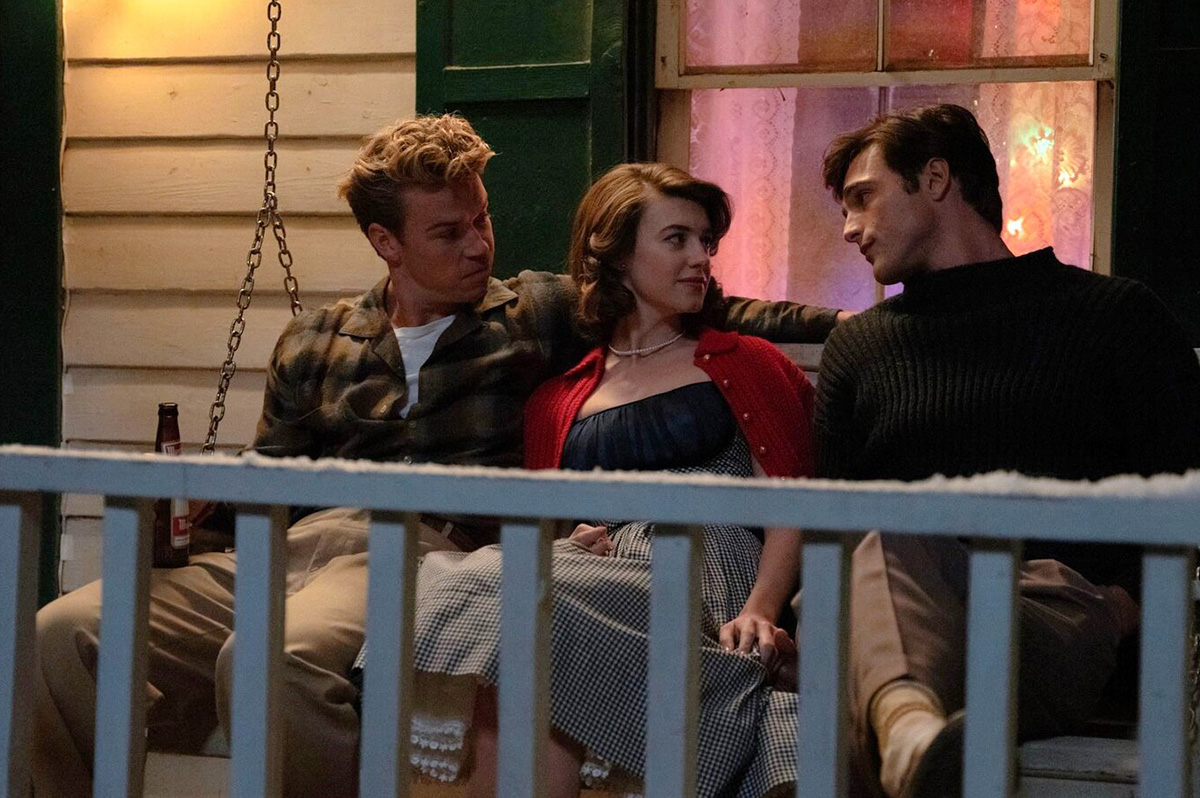
You might not know it from the publicity campaign, but the latest big-screen project for breakout “Euphoria” actor and sex symbol Jacob Elordi is 100% a gay love story.
Alright, perhaps that’s not entirely accurate. “On Swift Horses” – adapted from the novel by Shannon Pufahl and directed by Daniel Minahan from a screenplay by Bryce Kass – actually splits its focus between two characters, the other of which is played by “Normal People” star Daisy Edgar-Jones; but since that story arc is centered around her own journey toward lesbian self-acceptance, it’s unequivocally a “Queer Movie” anyway.
Set in 1950s America, at the end of the Korean War, it’s an unmistakably allegorical saga that stems from the marriage between Muriel (Edgar-Jones) and Lee (Will Poulter), a newly discharged serviceman with dreams of building a new life in California. His plans for the future include his brother Julius (Elordi), a fellow war vet whose restlessly adventurous spirit sparks a kindred connection and friendship with his sister-in-law despite a nebulously strained dynamic with Lee. Though the newlyweds follow through with the plan, Julius opts out in favor of the thrill of a hustler’s life in Las Vegas, where his skills as a card shark gain him employment in a casino. Nevertheless, he and Muriel maintain their friendship through correspondence, as he meets and falls in love with co-worker Henry (Diego Calva) and struggles to embrace the sexual identity he has long kept secret. Meanwhile, Muriel embarks on a secret life of her own, amassing a secret fortune by gambling on horse races and exploring a parallel path of self-acceptance with her boldly butch new neighbor, Sandra (Sasha Calle), as Lee clings obliviously to his dreams of building a suburban family life in the golden era of all-American post-war prosperity.
Leisurely, pensive, and deeply infused with a sense of impossible yearning, it’s the kind of movie that might easily, on the surface, be viewed as a nostalgia-tinged romantic triangle – albeit one with a distinctively queer twist. While it certainly functions on that level, one can’t help but be aware of a larger scope, a metaphoric conceit in which its three central characters serve as representatives of three conflicting experiences of the mid-century “American Dream” that still looms large in our national identity. With steadfast, good-hearted Lee as an anchor, sold on a vision of creating a better life for himself and his family than the one he grew up with, and the divergent threads of unfulfilled longing that thwart his fantasy with their irresistible pull on the wife and brother with whom he hoped to share it, it becomes a clear commentary on the bitter reality behind a past that doesn’t quite gel with the rose-colored memories still fetishized in the imagination of so many Americans.
Fortunately, it counterbalances that candidly expressed disharmony with an empathetic perspective in which none of its characters is framed as an antagonist; rather, each of them are presented in a way with which we can readily identify, each following a still-unsatisfied longing that draws them all inexorably apart despite the bonds – tenuous but emotionally genuine – they have formed with each other. To put it in a more politically-centered way, the staunch-but-naive conformity of Lee, in all his patriarchal tunnel vision, does not make him a villainous oppressor any more than the repressed queerness of Muriel and Julius make them idealized champions of freedom; all of them are simply following an inner call, and each can be forgiven – if not entirely excused – for the missteps they take in response to it
That’s not to say that Minahan’s movie doesn’t play into a tried-and-true formula; there’s a kind of “stock character” familiarity around those in the orbit of the three main characters, leading to an inevitably trope-ish feel to their involvement – despite the finely layered performances of Calva and Calle, which elevate their roles as lovers to the film’s two queer explorers and allow them both to contribute their own emotional textures – and occasionally pulls the movie into the territory of melodrama.
Yet that larger-than-life treatment, far from cheapening “On Swift Horses,” is a big part of its stylish appeal. Unapologetically lush in its gloriously photographed recreation of saturated 1950s cinema (courtesy of Director of Photography Luc Montpellier), it takes us willingly into its dream landscape of mid-century America – be it through the golden suburbs of still-uncrowded Southern California or the neon-lit flash of high-rolling Las Vegas, or even the macabre (but historically accurate) depiction of nuclear-age thrill-seekers convening for a party in the Nevada desert to watch an atom bomb detonate just a few short miles away. It’s a world remembered by most of us now only through the memories and artifacts of a former generation, rendered with an artful blend of romance and irony, and inhabited by people in whom we can see ourselves reflected while marveling at their beauty and charisma.
As lovely as the movie is to look at, and as effective as it is in evoking the mix of idealism and disillusionment that defines the America of our grandparents for many of us at the start of the second quarter of the 21st century, it’s that last factor that gives Minahan’s film the true “Hollywood” touch. His camera lovingly embraces the beauty of his stars. Edgar-Jones burns with an intelligence and self-determination that underscores the feminist struggle of the era, and the director makes sure to capture the journey she charts with full commitment; Poulter, who could have come off as something of a dumb brute, is allowed to emphasize the character’s nobility over his emotional cluelessness; Calle is a fiery presence, and Minahan lets her burn in a way that feels radical even today; Calva is both alluring and compelling, providing an unexpected depth of emotion that the film embraces as a chord of hope.
But it is Elordi who emerges to truly light up the screen. Handsome, charismatic, and palpably self-confident, he’s an actor who frankly needs to do little more than walk into the scene to grab our attention – but here he is given, perhaps for the first time, the chance to reveal an even greater depth of sensitivity and truth, making his Julius into the film’s beating heart and undisputed star. It’s an authenticity he brings into his much-touted love scenes with Calva, lighting up a chemistry that is ultimately as joyously queer-affirming as they are steamy.
Which is why Sony Pictures’ promotions for the film – which avoid directly referencing the sexuality of its two main characters, instead hinting at “secret desires” and implying a romantic connection between Elordi and Edgar-Jones – feels not just like a miscalculation, but a slap in the face. Though it’s an eloquent, quietly insightful look back at American cultural history, it incorporates those observations into a wistful, bittersweet, but somehow impossibly hopeful story that emphasizes the validity of queer love.
That’s something to be celebrated, not buried – which makes “On Swift Horses” a sure bet for your must-see movie list.
-
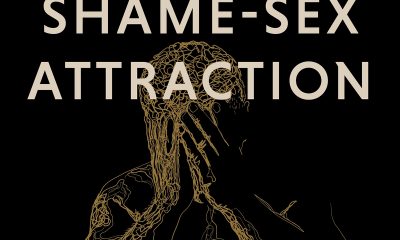
 Books4 days ago
Books4 days agoChronicling disastrous effects of ‘conversion therapy’
-
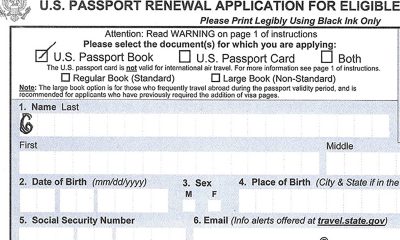
 U.S. Federal Courts4 days ago
U.S. Federal Courts4 days agoSecond federal lawsuit filed against White House passport policy
-
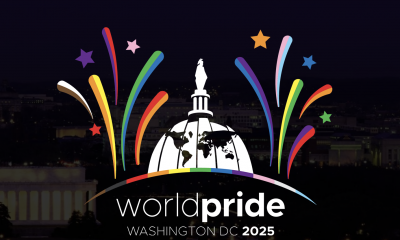
 Opinions4 days ago
Opinions4 days agoWe must show up to WorldPride 2025 in D.C.
-
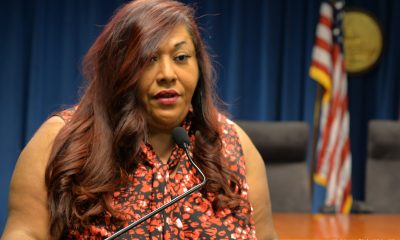
 District of Columbia4 days ago
District of Columbia4 days agoRuby Corado sentencing postponed for third time

